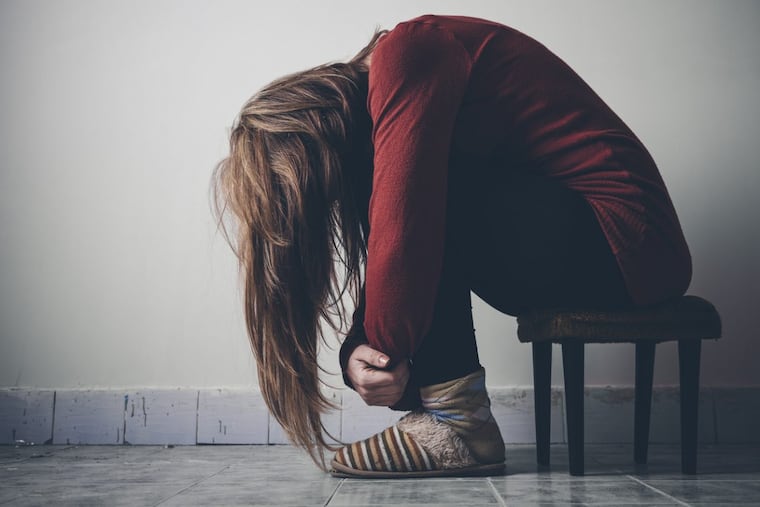Suicide attempts by self-poisoning more than double in teens and young adults
Over 19 years, there were more than 1.6 million suicide-related self-poisoning cases. Nearly three-quarters of those were female.

The number of adolescents and young adults attempting suicide by self-poisoning such as intentional drug overdoses has more than doubled in the last decade — an increase largely driven by young women, a new study found.
The research, published this week in the Journal of Pediatrics, adds to an array of troubling statistics about escalating suicidal behavior among youth.
Researchers from Nationwide Children’s Hospital and the Central Ohio Poison Center gathered data from poison control centers around the country that offer medical advice 24 hours a day through the Poison Help Line. They focused on cases of self-poisoning in children and young adults ages 10 to 24 between 2000 and 2018. They did not include accidental overdoses from recreational drug use, instead focusing specifically on suspected suicide attempts.
They found that the rate of suicide attempts by self-poisoning rose 141 percent between 2010 and 2018. Previous studies have shown the number of teens going to the emergency room with suicidal thoughts jumped during that time, too.
Suicide is the second-leading cause of death (after accidents) among Americans ages 10 to 24. While guns are the most common method resulting in death, self-poisoning is tried more often.
"While certainly unsettling, it's important that parents and individuals who care for youth don't panic at these findings,” John Ackerman, coauthor of the study and clinical psychologist at Nationwide Children’s Hospital, said in a statement.
Rather, he said, they should “equip themselves with the tools to start important conversations and engage in prevention strategies, such as safe storage of medications and reducing access to lethal means.”
Over the 19-year period covered in the study, there were more than 1.6 million suicide-related self-poisoning cases. Nearly three-quarters of those were female.
That fits a well-established trend that women attempt suicide more often than men, though men die more often from suicide. Researchers believe this has to do with the means used. Men more often use guns, while women more frequently turn to pills or other forms of self-poisoning, which are less likely to result in death.
What’s causing the increase
Although the study didn’t look at causes for the increase in numbers, the authors suggested several possible explanations.
The rate of suicide attempts increased most rapidly after 2011, they wrote, when “a number of society-shifting changes” were taking place.
Chief among them is the advent of social media and proliferation of smartphones, which changed the way youth find information and connect with one another.
Some studies have found that social-media use can increase feelings of depression and loneliness.
Experts say it’s easier for teens today to be exposed online to others struggling with suicidal thoughts or engaging in self-harm, which is more common than most people realize. Research suggests this exposure can make people with mental illness or other vulnerabilities more likely to consider suicide. Sometimes it leads to suicide contagion, where multiple deaths occur in succession within a school or town community.
The opioid crisis could also be putting children at greater risk for suicide, the study authors suggest.
Research shows children of parents with opioid use disorder are more likely to have mood disorders, such as depression, and a study on college students found that knowing people in addiction can affect students’ mental and emotional well-being too.
In North Philadelphia, high school students living in neighborhoods most affected by the opioid crisis have reported trauma from seeing people injecting heroin during their daily walk to school and being unable to play in parks or basketball courts because of the used hypodermic needles left behind.
What can be done to prevent suicide attempts
Suicide is preventable, experts emphasize, and there are many approaches to prevention.
Screening teens for suicide risk during primary-care visits and in school could be a first step.
Some researchers have also developed a suicide prediction score meant to help therapists identify those at greatest risk. Other scientists are looking to brain scans for potential biological markers of suicide.
Awareness campaigns that teach children and adults to look for warning signs and feel more comfortable initiating conversations on the topic are also important.
"There is no need to wait until there is a major crisis to talk about a plan to manage emotional distress,” said Ackerman, who works on suicide-prevention training for community organizations. “Actually, a good time to talk directly about suicide or mental health is when things are going well.”
Parents should check in regularly with their children, ask them directly how they are doing and if they have ever had thoughts about ending their life, he said.
Schools and colleges also have a role to play, with many teaching students to build emotional resilience or apply the concepts of positive psychology to improve their daily lives. Some universities are also training faculty on how to respond to students with suicidal thoughts.
It’s critical that anyone attempting suicide get counseling and support immediately afterward, experts say, as research shows they are at higher risk to try it again.
If you or someone you know is in crisis, call the National Suicide Prevention Lifeline at 1-800-273-8255 or text TALK to the Crisis Text Line at 741741.